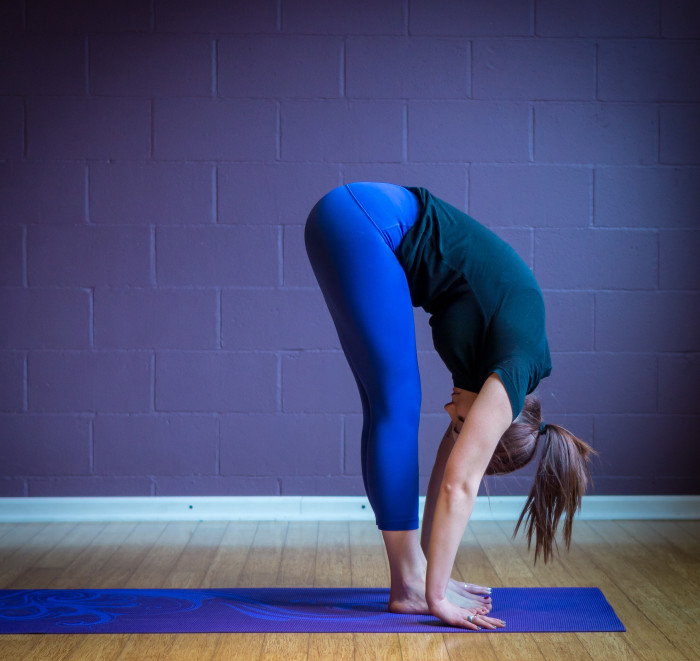
Although we know that any form of exercise can help us relieve stress, one style of exercise seems to receive special attention for its ability to calm our nerves and put life’s challenges in perspective–and that’s yoga. Stressed about work? Do yoga. Life is too overwhelming? Book a yoga retreat, etc.
Those of us who practice yoga know that yes, yoga does seem to offer its own special brand of stress reduction. Not only does a single class leave us feeling like a new person, the continued practice of yoga helps us reach a more balanced state of mind—even when we’re not on the mat.
Of course, yoga as stress therapy is partially rooted in the ethos of yoga—or at least the contemporary styles of yoga practiced today in which we’re taught to listen to the body rather than forcefully push the body, and we’re encouraged to recognize the divinity within ourselves as well as others. It’s no wonder that yoga is so good at teaching us self-care.
But what I want to explore is what’s happening in the body when we practice yoga that lets us unwind in such a lovely way. (Disclaimer: The following explanation errs on the metaphorical end of the spectrum. The human brain is far more complex than I’m able to portray in this short piece—or any length of text, to be honest!)
How Yoga Helps Us with Stress Management
As Dr M. Storoni explains, yoga helps us train the stress circuit by engaging both the sympathetic and parasympathetic nervous systems. In simple terms, our stress is governed by the sympathetic and the parasympathetic nervous systems. The sympathetic nervous system is associated with the “fight or flight” response—as well as the release of cortisol and adrenaline we experience during a stressful moment. The parasympathetic nervous system, however, is associated with relaxation (a.k.a. “rest and digest”).
Figuratively speaking, the stress and relaxation responses can be turned on or off through particular physical movements, explains Storoni. Three fundamental types of yoga activities engage these “on” and “off” “switches:” holding positions, bending forwards, and bending backwards.
When we hold a posture, we require ourselves to focus on balancing and staying still. This engages what Storoni calls the “logical brain” and applies the brake to the stress response. But rarely in yoga are we just holding a position. Many asanas are more complex and require holding a posture while bending forward or backwards.
When we bend backwards, the stress response is “turned on” as we contract muscles along the neck. So if you’re holding upward dog, not only is your body focused on staying in the position, it is also mediating the stress response triggered by this gentle backward bend in the neck. Working through this challenging situation helps strengthen the mind’s ability to navigate stressful situations while staying calm, or holding the posture, so to speak. The implications of this phenomenon extend far beyond the mat as Storoni writes—
“Training the logical brain in this way for a long time can result in a rewiring of the nerve connection within the [brain]. New circuitry that enables you to find it easier to control your thoughts is formed. You may find it easier to channel your thoughts in the direction you want and not ‘dwell’ on negative thoughts or experiences.”
Although we often hear that yoga “helps us let go” or even that yoga teaches us to be more comfortable with leaving things up to the universe, when it comes to what’s actually happening in the body, it would seem that yoga actually gives us more control over our mental states. (Do you hear that, Type As? Yoga is for you, too!)
Finally, there are forward bends. I had always heard yoga instructors mention that forward bends were “good for the nervous system,” but I never really understood why. (What I wanted to reply was, “these are annoying for my hamstrings!”) But it turns out that there’s some truth to the forward-bends-as-calming-agent theory. First, we often hold forward bends, and we’ve already discussed that holding a position helps the mind quiet the stress response. Second, bending the neck forward (rather than back, as in a backbend), “turns on” the relaxation response. Add to that slow, conscious breathing, and you have a truly relaxing pose.
The final lesson here may be that if you don’t have time do a full yoga routine (say, if you’re at work), step into the bathroom and spend a few minutes in Uttanasana (forward fold).

Is yoga a part of your stress management?
More in Peaceful Practice: Does Yoga Breathing Really Oxygenate the Body?
Does Yoga Give You Enough Cardio?
Get more like this—Subscribe to our daily inspirational newsletter for exclusive content!
__
Photo: Mary Hood Luttrell, Caitlyn Gibson




